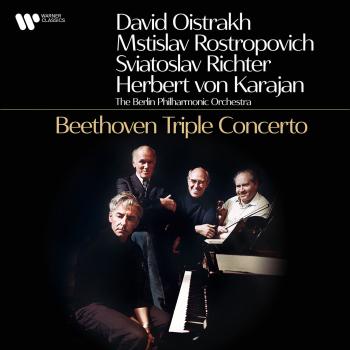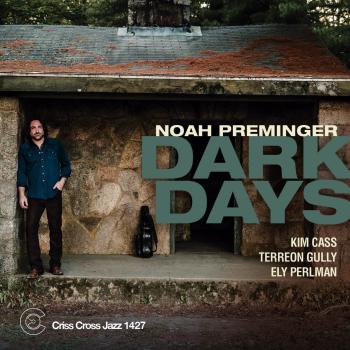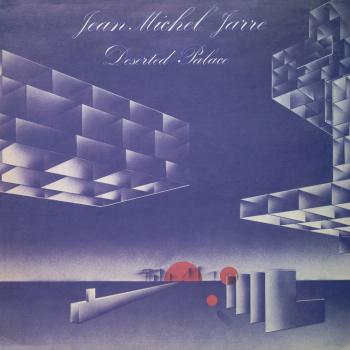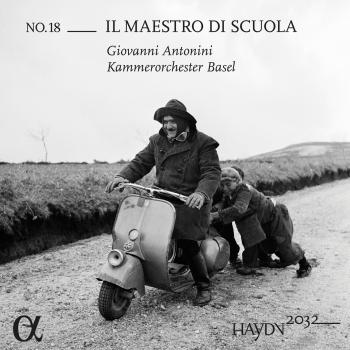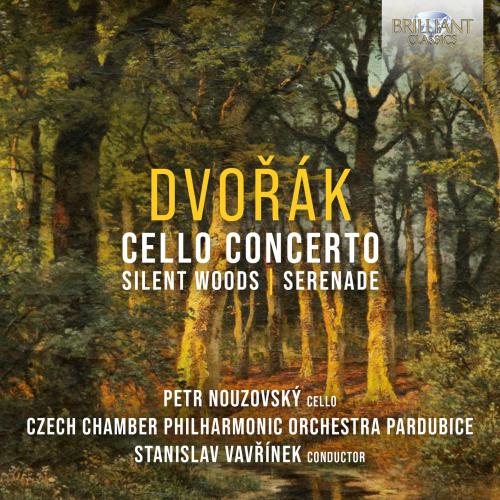
Dvořák: Cello Concerto, Silent Woods, Serenade Petr Nouzovský, Czech Chamber Philharmonic Orchestra Pardubice & Stanislav Vavřinek
Album Info
Album Veröffentlichung:
2022
HRA-Veröffentlichung:
28.01.2022
Label: Brilliant Classics
Genre: Classical
Subgenre: Concertos
Interpret: Petr Nouzovský, Czech Chamber Philharmonic Orchestra Pardubice & Stanislav Vavřinek
Komponist: Antonin Dvorák (1841-1904)
Das Album enthält Albumcover
- Antonín Dvorák (1841 - 1904): Silent Woods for Cello & Orchestra, Op. 68:
- 1 Dvorák: Silent Woods for Cello & Orchestra, Op. 68 05:53
- Cello Concerto in B Minor, Op. 104:
- 2 Dvorák: Cello Concerto in B Minor, Op. 104: I. Allegro 15:12
- 3 Dvorák: Cello Concerto in B Minor, Op. 104: II. Adagio ma non Troppo 11:53
- 4 Dvorák: Cello Concerto in B Minor, Op. 104: III. Finale. Allegro Moderato 12:30
- Serenade for Strings in E Major, Op. 22:
- 5 Dvorák: Serenade for Strings in E Major, Op. 22: I. Moderato 04:45
- 6 Dvorák: Serenade for Strings in E Major, Op. 22: II. Tempo di Valse 07:06
- 7 Dvorák: Serenade for Strings in E Major, Op. 22: III. Scherzo. Vivace 05:53
- 8 Dvorák: Serenade for Strings in E Major, Op. 22: IV. Larghetto 05:00
- 9 Dvorák: Serenade for Strings in E Major, Op. 22: V. Finale. Allegro Vivace 06:11
Info zu Dvořák: Cello Concerto, Silent Woods, Serenade
Antonin Dvořaìk (1841-1904) was a great synthesist, ingeniously combining arguably incongruent strains: folk music (Czech as well as American) with refined classical forms, romantic extroversion with instrumental austerity and national Czech character with worldwide appeal. The three compositions on this album were all created at turning points in Dvořák’s life, when radical changes in his situation impacted his creative career.
His Serenade for Strings was composed in 1875, the same year the impoverished musician became a successful composer almost overnight, after the publisher Simrock made Dvořák’s Moravian Duets a veritable bestseller, having agreed to work with him on the recommendation of Johannes Brahms. Each of the Serenade’s five movements is a variation on ternary (A–B–A) form. The resourcefulness with which Dvořák invents novel ways of returning from the middle section to the opening motive and key is astounding.
Silent Woods has much to do with Dvořák’s relocation to America. He was engaged to establish and direct a new National Conservatory in New York. Based on his now established ability to blend Czech folk music with large-scale classical forms it was hoped he would do the same in his new post with American folk music. The Czech transplant indeed soon found his bearings and set about creating a new tradition of American national music on the highest artistic footing. In 1892, before leaving his home for the US, Dvořák gave something of a farewell tour of Czech cities, writing the cello version of Silent Woods for performance on these recitals. Ten years later, Dvořák created the version for cello and orchestra recorded here.
At the conclusion of his time in New York and on his return to Bohemia, Dvořák was focused particularly on writing his Cello Concerto. At first believing the cello an unsuitable instrument for concertante music, his mind had been changed on hearing a concerto by American virtuoso and composer Victor Herbert, and Dvořák’s masterpiece took on its definitive form in 1895. Disagreements over alterations suggested by the work’s intended first soloist led to the premiere being delayed until a performance in London by Leo Stern in 1896. Now, no other concertante composition for cello and orchestra is performed more frequently on the international stage.
Petr Nouzovský, cello
Czech Chamber Philharmonic Orchestra Pardubice
Stanislav Vavrínek, conductor
Petr Nouzovský
recognized as one of Europe’s eminent cellists of his generation, performs regularly on many international concert stages. He has garnered international acclaim for his deeply expressive musicianship and musical virtuosity, as well as for the gloriously sonorous tone of his 1921 Georg Rauer cello.
This present concert season, Petr Nouzovský will perform in numerous recitals and orchestral concerts throughout Europe, the U. S., and Asia. In Europe, he will appear with the Krakow Philharmonic, the Slovak Philharmonic, the Nagoya Philharmonic, the SWF Philharmonie, the Prague Radio Symphony Orchestra, and others. The previous seasons have seen his performances in Germany, China, Japan, New York, Estonia, or Poland.
The young cellist continues to collaborate regularly with prominent conductors, such as Jakub Hrůša, Charles Olivieri-Munroe, Petr Altrichter, Caspar Richter, Jan Schultsz, Leoš Svárovský, or Tomáš Brauner.
Petr Nouzovský has made recordings for Dabringhaus und Grimm, Brilliant Classics, CUBE, Albany, Supraphon, and Arco Diva. His CD ‘Vivat tango’ has been declared the 2014 CD of the Year by the New York Violoncello Foundation. His new recording of Bohuslav Martinů’s complete works for cello and orchestra, produced with the Pilsen Philharmonic under the baton of Tomáš Brauner (Dabringhaus und Grimm), has been awarded the 2017 Preis der Deutschen Schallplattenkritik and the 2018 Classic Prague Award; glowing reviews have appeared in the Frankfurter Allgemeine or the Pizzicato Luxembourg. The Pilsen Philharmonic has named Petr Nouzovský its ‘Soloist in Residence’ for 2014-2015 and 2015-2016.
Petr Nouzovský is the first cellist in history to record complete work for Cello by Bohuslav Martinů (Dabringhaus und Grimm, Arco Diva)
From hundreds of applicants worldwide, Petr Nouzovský has been one of the only ten chosen to participate in the legendary Piatigorsky Seminars in Los Angeles; subsequently, he was invited to return for a second time, which is considered even more exceptional. He has attended master classes all over the world and studied with such legends of his instrument as Mstislav Rostropovich, Boris Pergamenschikow, Franz Helmerson, Lynn Harrell, or David Geringas.
Dieses Album enthält kein Booklet


